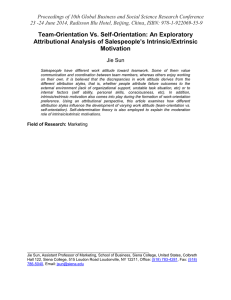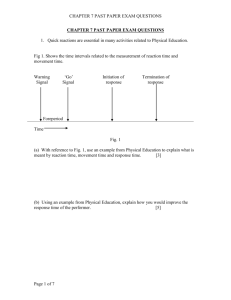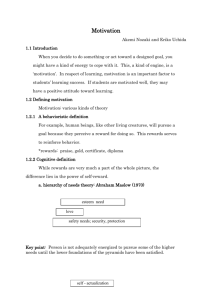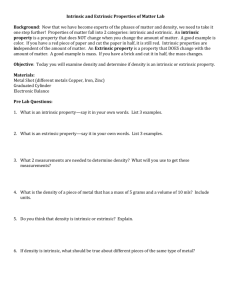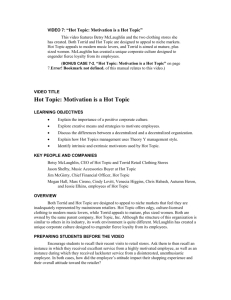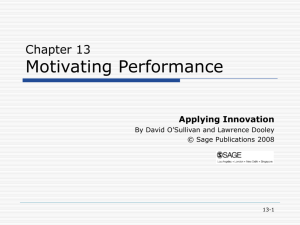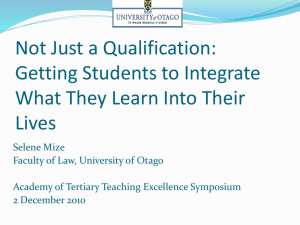GCSE PE Year 10 Lesson 1 Skill
advertisement
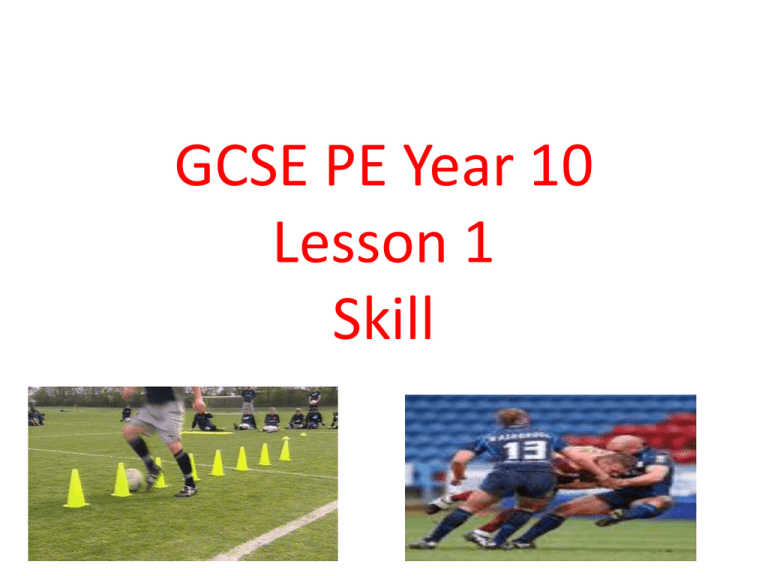
GCSE PE Year 10 Lesson 1 Skill Skill Aquisition • Learning Objectives: • Be able to explain what skill is. • Be able to explain the different aspects of skill Continium • Be able to explain the different forms of feedback and the importance of it Starter 1. How many bones make up the human skeleton 2. What does the term role model mean? Skill what is it? Q. What is Skill ? Task: In pairs discuss and write your own definition of what you thing the term mean? Skill Skill is a physical movement that is :1. A learned response to a stimulus. 2. A predetermined movement pattern. 3.Performed with minimum outlay and effort Definition of skill “Skill is learned ability to bring about a predetermined response with maximum certainty and the minimum amount of effort” Skilled sportsperson In pairs choose a sportsperson you believe to be skilled. Justify your answer why you have chosen this person. Referring to the definition of skill in your answer Classification of Skill Why do you think skill is classified? Skill Classification Skill is either BASIC or COMPLEX Basic • We learn a lot of basic skills at an early age • Basic skills are transferable between lots of different sports and situations. • You have to master the basic skills before moving onto the complex skills Examples: Running, catching, throwing, dodging and hopping Complex • Require more co-ordination and control • Specific to a particular sport (non transferable) • Take a lot of practice to master. • With your partner think of at 5 skills that you consider complex Complex skills • • • • • • Smash shot in badminton Tennis serve Volley in football Lay up in basketball Triple jump Shot put Types of Skill There are two types of skill OPEN and CLOSED Open Skill • Are skills most influenced by external factors. • For example the environment is constantly changing. • Movements have to be adapted. • Skills are predominantly perceptual. • Skills is mostly externally paced. • Draw a spider diagram with 6 legs and give examples of sports examples Closed Skills • Skills follow a set pattern of movement, regardless of external factors. • Take place in a stable predictable enviroment • Perform know exactly what to do and when • Skill are not affected by the enviroment • Have a clear beginning end ending • Skills tend to be self paced. • Draw a spider diagram with 8 legs and give examples of sports examples In reality though… • Most skills fall between Open and Closed • Open Skills • Closed skills Are these closed or open skills? • • • • • • • • Golf swing Start dive in swimming Goalkeeper in football Tennis Serve Gymnast on a beam 100m sprint start Shot putt Skiing on an empty piste What is feedback? In pair discuss what you think it is.. Feedback What is feedback? Simple terms: • When we learn new skills we need information to let us know whether we are ding it correct or incorrect. Called FEEDBACK More advance definition is the information that a performer receives about their performance, whether that performance is in practice, a training session, or during a competition. Different types of feedback Two types of feedback: Intrinsic Feedback Extrinsic Feedback Intrinsic Feedback • Intrinsic feedback is information that a performer receives from his or her own experiences. Extrinsic Feedback Extrinsic Feedback • Extrinsic feedback is the information that a performer receives from an outside source. This information may come from a coach, a teammate, scores during a competition, crowd or video analysis. There are two components of feedback Components of Feedback Knowledge of Results KR Knowledge of Performance KP KP and KR KP KR Knowing how you performed regardless of result Tells you what you achieved but not how you did it Knowledge of performance A trampolinist performing a somersault will know whether they have completed the 360 degree turn and landed upright. They would of felt the action was good or bad from within their body. Think of an example from your sport? Knowledge of Results • If the trampolinist receives the information about her performance from the judges scores, coach tell them about routine, crowds reaction. The Importance of Feedback • Both intrinsic and extrinsic feedback are important when coaching. But if not used properly, they can also be detrimental to the ultimate goal, which is to help a sportsman/women to improve. Feedback should be… • Feedback needs to be positive not negative • Given quickly after a session or performance to reinforce learning. • Should be FOCUSED on key area of concern • Concentrate on what needs to be done and not you did wrong Homework • • • • Skills homework is on wiki spaces Year 10 PE shared pages Complete by next Sunday



